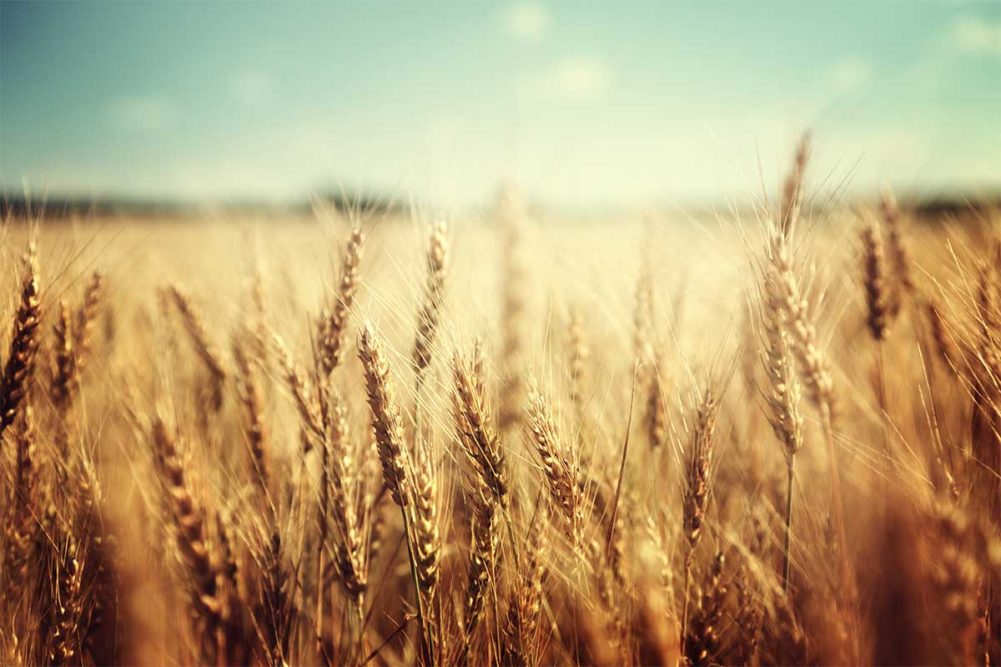KANSAS CITY, MISSOURI, US — With the weather-prolonged hard red winter wheat harvest completed and smaller spring wheat and durum crops also in bins, attention has turned to seeding the 2022 winter wheat crop and the advancing fall crop harvest.
The hard red winter wheat harvest was, for all intents and purposes, completed before the calendar flipped to September. That was later than is typical, largely due to cooler temperatures, high humidity, and moisture content.
“It was not a traditional harvest,” said Justin Gilpin, chief executive officer of Kansas Wheat. “Every farmer will tell you it was an exhausting harvest because it took so long to get wheat out of the fields.”
Crews in a typical hard red winter wheat harvest often work 10- to 12-hour days. Temperatures may range up to or even over 100° with south winds blowing about 20 miles per hour. This year, temperatures were lower, and cloud cover was common. Crews had lengthy wait times in mornings while fields dried down, and frequently had to shut down early as humidity rose.
But when it was all cut and binned, the southern Plains wheat crop in Kansas, Oklahoma and Texas had good yields and mostly good quality measurements, though protein content was tamped down somewhat by high yields. As the harvest moved into the northern Plains, higher protein content partly offset lower proteins from the southern Plains, but “there definitely are quality issues to navigate that will make it an interesting year for wheat buyers,” Gilpin said.
Harvests of the drought-plagued hard red spring and durum wheat crops in the US northern Plains wrapped about a month after the hard red winter crop was fully binned.
“Due to drought, we saw a lot of areas where producers had below-average yields, some in the single digits,” said Erica Olson, market development and research manager with the North Dakota Wheat Commission. “Some producers also abandoned their fields for feed or insurance purposes. At the same time, some producers had fields turn out better than expected, not bin-busters by any means, but close to average and a few areas above average.”
Meanwhile, US producers were making good progress harvesting row crops such as corn, soybeans, sorghum and sunflowers.
The US Department of Agriculture said the 2021 corn crop in the 18 principal production states was 18% harvested by Sept. 26, ahead of 14% a year earlier and 15% as the recent five-year average for the date.
The corn harvest was furthest along in Texas at 83% completed (69% as the average for the date), followed by North Carolina at 77% (80%). Aside from those leading states, the most harvest progress had been made in the Mid-South region, where farmers had collected 43% of the Tennessee corn crop (well behind 62% as the average for the date) and 39% of the Kentucky corn crop (52%).
By contrast, corn producers across the central Plains and into the Central states were harvesting the crop at or ahead of the typical pace. Corn harvest completion by Sept. 26 was 16% in Colorado (7% as the average), 36% in Kansas (30%), 34% in Missouri (34%), 21% in Illinois (18%), 15% in Indiana (13%) and 6% in Ohio (6%).
The corn harvest had moved as far north as Wisconsin and Michigan by Sept. 26, the USDA said, with completion rates in most other states still in the single digits and ahead of the average pace. Two of the top production states also were ahead of normal: Iowa at 9% versus 6% as the average for the date, and Nebraska at 13% compared with 10% as the average.
The 2021 US soybean crop was being harvested at a rapid clip, jumping to 16% harvested by Sept. 26 from 6% a week earlier, behind 18% a year earlier, but ahead of 13% as the recent five-year average for the date. In the major production states, harvest completion by that date was 26% in North Dakota (16% as average), 30% in Minnesota (15%), 17% in South Dakota (13%), 18% in Iowa (11%), 17% in Nebraska (15%), 4% in Kansas (5%), 25% in Arkansas (26%), 10% in Illinois (11%), 13% in Indiana (12%), 5% in Ohio (8%), 11% in Wisconsin (5%) and 12% in Michigan (7%).
Dry conditions in September that afforded a strong pace for collection of row crops also depleted soil moisture supplies just as some farmers shifted to seeding next year’s hard red winter wheat crop. Rainy forecasts last week heartened growers anxious about moisture deficits.
Seeding completion by Sept. 26 in hard red winter wheat country was 27% in Kansas, 57% in Colorado, 28% in Oklahoma, 37% in Texas, 61% in Nebraska, 58% in South Dakota, 42% in Montana, the USDA said. The pace of soft winter wheat seeding was faster in states farthest east. Seeding by Sept. 26 was 1% completed in Missouri (4% as the 2016-20 average for the date), 2% in Illinois (4%), 11% in Indiana (8%), 5% in Ohio (10%), 17% in Michigan (18%), the USDA said.






